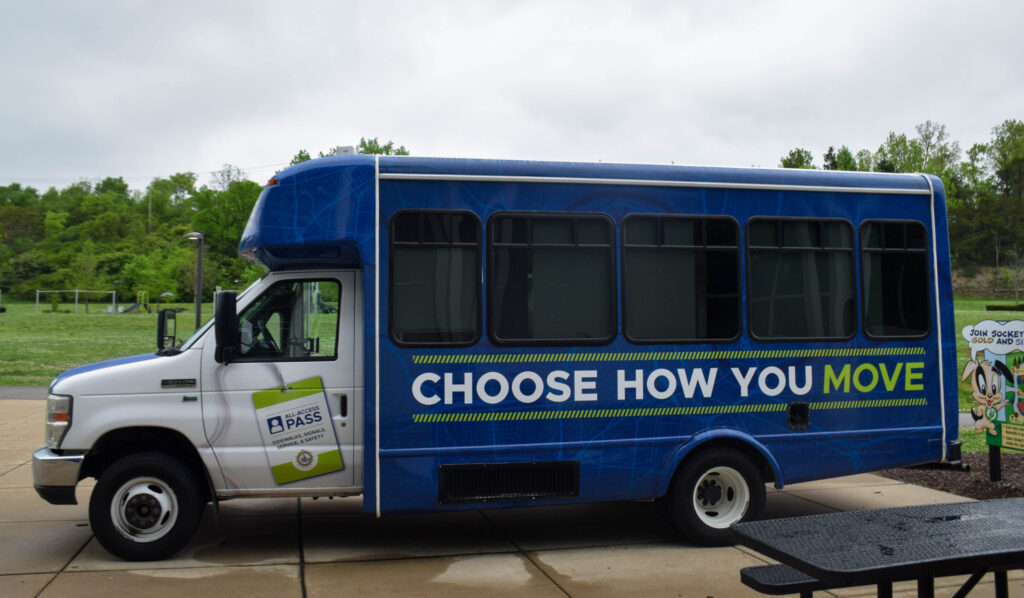
Nashville Mayor Freddie O’Connell is one step closer to seeing the city’s transit system overhauled. The plan, along with the language that voters would see on the ballot this fall, has been approved by the Metro Council.
The transit referendum will need to clear one final hurdle — a sign-off from the Davidson County Election Commission — before appearing on the Nov. 5 ballot for voters.
While the plan sailed through its three required council readings, some members did express a desire to adjust the priorities of the plan, requesting that improvements to Nolensville Pike take priority over other corridors. Eight council members co-sponsored a resolution that cited its high ridership and asked that it be placed higher on the conceptual schedule.
O’Connell has agreed to form a working group to jumpstart the planning and engineering process. It will include a representative from the Nashville Department of Transportation, the Mayor’s Office, Tennessee Immigrant & Refugee Rights Coalition, the community and a member of the Metro Council. However, O’Connell has said that, compared to the other major corridor reaching into Southeast Nashville that is targeted for investment (Murfreesboro Pike), Nolensville’s narrow width means it cannot accommodate improvements as easily.
“Nolensville will require probably some very careful, detailed engineering and planning work to make sure that top-to-bottom, front-to-back, it can get the kinds of upgrades we would anticipate for Murfreesboro Pike,” the mayor told reporters last week. “So we just think it’s going to take longer.”
Much of the council has been very involved in the referendum process, even before the ballot language was officially filed last month. While crafting the proposal’s details, O’Connell met with almost all councilmembers to discuss its specifics. And, when the bill entered the chambers, a majority of the council signed on as co-sponsors.
The plan proposes increasing the city’s sales tax by half of a cent to fund things like 86 miles of new sidewalks, 600 new traffic signals, around-the-clock bus service, dedicated bus lanes, a dozen new transit centers and more.
Under Tennessee state law, verbiage is limited to 250 words and must be written in a “clear and coherent manner using words with common everyday meanings.”
Here is the ballot language:
“Passage of this measure adopted by Ordinance BL2024-_______, allows the Metropolitan Government to complete the entire priority sidewalk network when combined with annual capital spending, provide significantly expanded 24-hour public transportation service 365 days a year including frequent service on major routes, add more neighborhood transit centers, improve safety for all roadway users, and upgrade and modernize nearly two-thirds of the city’s signalized intersections.
This program’s capital cost is estimated to have a current cost of $3,096,000,000. Once construction is complete, the estimated value of recurring annual operating and maintenance costs is approximately $111,000,000. The Metropolitan Transit Authority (WeGo), Nashville Department of Transportation and Multimodal Infrastructure, Metro Planning Department, and Mayor’s Office, in partnership with other Metro departments, will undertake implementation of the program.
This program will be funded by federal grants, revenues from transportation system fares, debt, and a sales tax surcharge of 0.5%. The tax surcharge will end once all debt issued for the transit improvement program has been paid and the Metropolitan Council determines by resolution that the revenues from the tax surcharges are no longer needed for operation of the program.
FOR or AGAINST”
The ballot measure also includes the plan’s total capital cost (just under $3.1 billion, over the course of 15 years) and its annual operating cost (around $111 million per year). In 2018, the last time Nashville attempted to secure a dedicated source of transit funding via referendum, the council took issue with the proposed language — eventually amending the number used for the plan’s larger overall cost.
This story was updated after the council’s vote on Wednesday, July 17.

